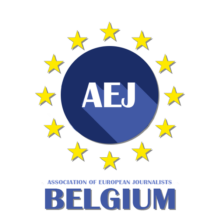
By Wenka Weber
Free and pluralistic media plays a crucial role in democracies. While Europe generally enjoys a free media landscape, growing challenges arise as a result of media centralisation. Article 22 of the EMFA, the so-called ‘media plurality test’, aims to establish common rules to assess how pluralistic media is in Europe and oblige Member States to set up rules to ensure that media mergers and takeovers do not jeopardise media plurality and editorial independence.
The EMFA has been long awaited, having taken 30 years to develop. In 1992, the European Parliament first called for an anti-concentration directive in its resolution on media concentration and diversity of opinion. Adopted in May 2024, the measures to protect media freedom are now due to come into force from August 2025. In this context, the ‘Centre for Media Pluralism and Press Freedom’ and the ‘Robert Schuman Centre for Advanced Studies’ organised a series of events with experts from universities and think tanks to analyse the upcoming measures and their strengths and weaknesses.
“It is an important and urgent topic,” Roberta Carlini, professor at the European University Institute (EUI) noted at the recent event exploring the provisions of Article 22 under the EMFA. She highlighted the results of the ‘Media Pluralism Monitor’, which has revealed worrying levels of media concentration across Europe.
At the EU level, not all member states have implemented media-specific measures to combat concentration, Carlini explained. The measures differ from country to country and the definition of pluralism also varies and is often not taken into account when implementing policies.
She believes that these are fundamental aspects that must be taken into account when defining the scope of the provisions. Under the EMFA, centralisation involves ‘an association involving at least one media service provider or an online platform provider offering access to media content’. However, it is unclear what this means in practice.
Tanja Kerševan, research fellow and assistant professor at the University of Ljubljana, said during the event that there is a lack of clear guidelines for assessing and evaluating the impact of media concentration. “Assessment depends on self-reported information, without in-built review mechanisms,” she said. “There are challenges ahead, not just in the implementation process (…) long-term strategic thinking is required, not just reactive policy making, but in strengthening our own communications infrastructure, ensuring technological resilience.”
According to the participants of the event, much of the measures included in the EMFA to tackle media concentration come too little, too late, as many media organisations have fallen under the ownership of too few owners. However, the upcoming mechanism is a step in the right direction. “We need to take into account the strong potential that is crucial for the transition to reduce fragmentation,” concluded Maria Luisa Stasi, Head of Legal and Policy for Digital Markets at ARTICLE 19.
